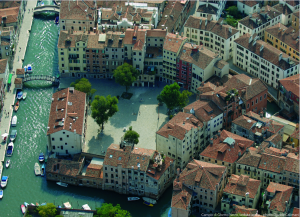VENICE AND THE GHETTO The Jews in the Age of the Medici
 The Center for Jewish History in New York will mark the 500th anniversary of the creation of the Venice ghetto in 1516 with a new exhibition that reveals the complex history of Jewish life in the Mediterranean world following the confinement of Venetian Jews to a walled-off section of their city.
The Center for Jewish History in New York will mark the 500th anniversary of the creation of the Venice ghetto in 1516 with a new exhibition that reveals the complex history of Jewish life in the Mediterranean world following the confinement of Venetian Jews to a walled-off section of their city.
This unique assemblage of Italian materials – some of which date from the 16th century – opens a window onto intellectual and artistic achievement, Jewish practice and thought, enduring economic and cultural ties to the Christian and Islamic communities, and the ways in which the Venice ghetto served as a point of connection for Jewish communities in Europe and the Ottoman Empire.
Prominent objects in the exhibition include the Meshal ha-kadmoni, courtesy of the YIVO Institute for Jewish Research, written in 1281 by a Castilian Hebrew poet, scholar and Cabalist, as a response to the popular Arabian Nights. To increase its popularity, the book was embellished with fascinating miniature woodcuts, making it one of the first illustrated Hebrew book ever printed. Other prominent objects include a Bomberg Bible from 1547 from the YIVO Institute for Jewish Research collections, a 19th Century Italian Torah shield from the Yeshiva University Museum and “Della influenza del ghetto nello Stato” from 1782 from the collections of the Center for Jewish History.
The “Venice Ghetto & Beyond” exhibition features materials from the collections of the Center for Jewish History and two of its partners, YIVO Institute for Jewish Research and Yeshiva University Museum, as well as other institutions and private collectors. The exhibition is presented by the Center for Jewish History and the Medici Archive Project.
This article was published in the Broadway World.
